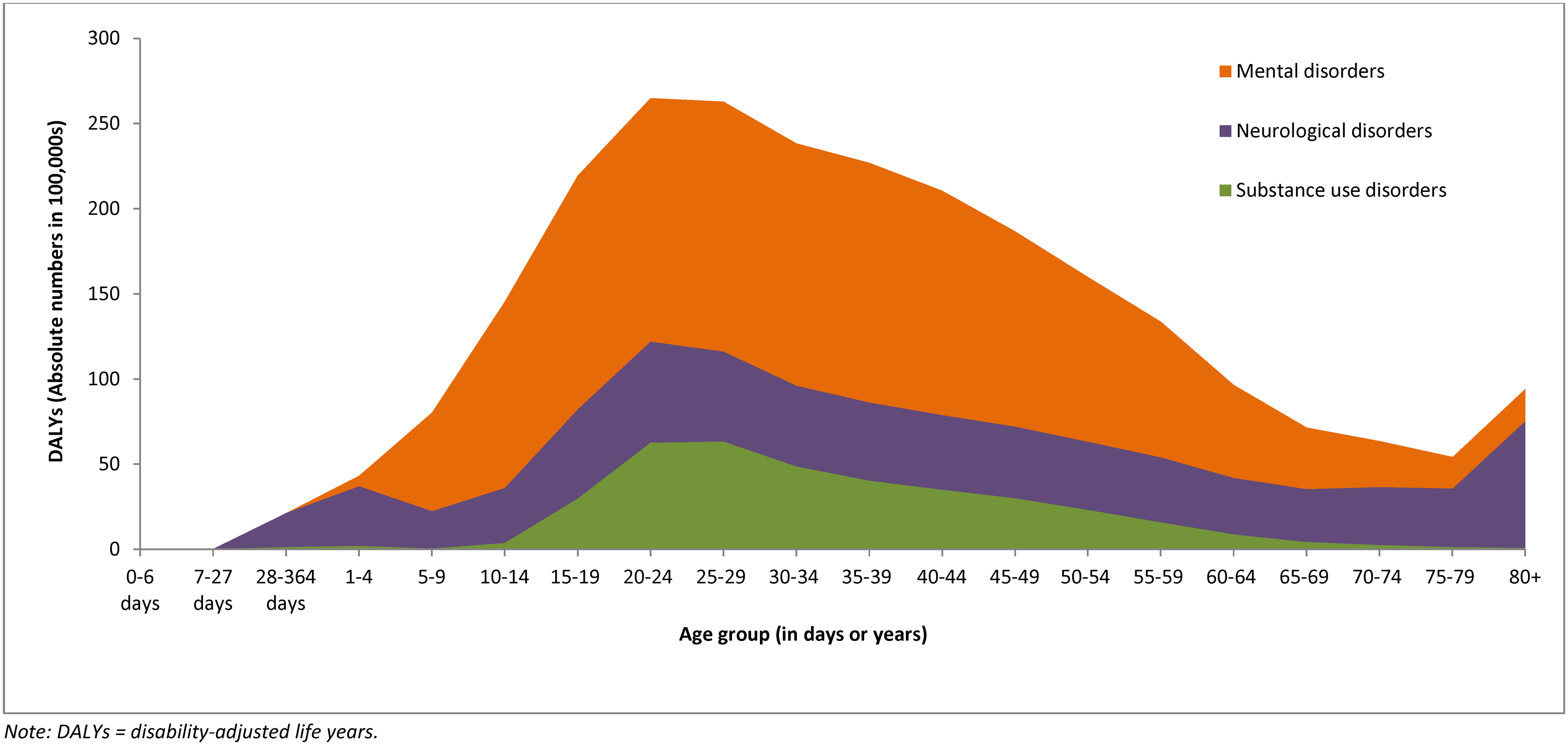Resources Topic 1 - Introduction to Global Mental Health
Resources Topic 1 - Introduction to Global Mental Health
Resources, Topic 1: Introduction to Global Mental Health
Firstly, let’s start by reading an overview of global mental health issues by the WHO which covers the definition of mental health, and gives a useful overview of determinants of mental health, strategies to tackle it and approaches to preventing mental ill health. World Health Organization, 2018. Mental health: strengthening our response. Geneva: WHO.
Now, we will look at the huge public health significance of mental health issues worldwide. Here are some quotes to illustrate the extent of the problems:
"The burden of mental, neurological, and substance use (MNS) disorders increased by 41% between 1990 and 2010 and now accounts for one in every 10 lost years of health globally. This sobering statistic does not take into account the substantial excess mortality associated with these disorders or the social and economic consequences of MNS disorders on affected persons, their caregivers, and society." from Addressing the Burden of Mental, Neurological and Substance Use Disorders: Key Messages from Disease Control Priorities, 3rd Edition
“In 2010, mental, neurological and substance use disorders accounted for 10.4% of global DALYs (Disability Adjusted Life Years), 2.3% of global YLLs (Years lost to premature mortality) and, 28.5% of global YLDs (years lived with disability), making them the leading cause of YLDs. Mental disorders accounted for the largest proportion of DALYs (56.7%), followed by neurological disorders (28.6%) and substance use disorders (14.7%).” (Whiteford et al, 2015)

From Whiteford et al, 2015
“The World Health Organization (WHO) estimates that Globally, an estimated 350 million people are affected by depression. More women are affected than men......Bipolar affective disorder affects about 60 million people worldwide....Schizophrenia is a severe mental disorder, affecting about 21 million people worldwide....Worldwide, 47.5 million people have dementia...Health systems have not yet adequately responded to the burden of mental disorders. As a consequence, the gap between the need for treatment and its provision is wide all over the world. In low- and middle-income countries, between 76% and 85% of people with mental disorders receive no treatment for their disorder. In high-income countries, between 35% and 50% of people with mental disorders are in the same situation. A further compounding problem is the poor quality of care for many of those who do receive treatment.” (WHO, Mental disorders fact sheet 2016)
As you can see, mental health has been as far neglected in global health priorities. Please read the following journal article which discusses the links between development goals and health. The second WHO report on mental health and development gives more detailed information about how development outcomes can be improved by targeting people with mental health conditions which will help you in answering the discussion question.
A position statement on mental health in the post-2015 development agenda Eaton, J, Kakuma R, Wright A, Minas, H. International Journal of Mental Health Systems 2014, 8:28 and WHO report on: Mental health and development: targeting people with mental health conditions as a vulnerable group.
Mental health has wider impact on the state of health of an individual. A seminal group of articles were published in 2007 The Lancet Series on Global Mental Health. One of the articles was written by Vikram Patel and Martin Prince, two of the leading experts in the field reviews the inter-relationship between mental disorders and other health conditions, making the case that there is ‘no health without mental health’.
Of course, one of the major reasons why mental health has been neglected in health agendas is due to scarce resources. We will now take a look at some of the problems of mental health
The resources gap:
The following articles in The Lancet review the scarcity of resources and problems within health systems – documenting the state of mental health systems in all countries of the world, based on United Nations and World Health Organization (WHO) databases and individual country reports.
Global Mental Health: Resources for mental health: scarcity, inequity, and inefficiency.
Mental health systems in countries: where are we now?
Another issue is the problem of professional expertise and training in mental health. See this paper describing the problems in retaining community health workers in Ghana.
Now you can explore data from your own country. The mental health atlas project in 2011 assessed the state of mental health care resources for every country. For information regarding the mental health resources and health care structure relating to your own country please check your country’s profile in the WHO: Mental Health Atlas 2011 –country profiles of MH resources.